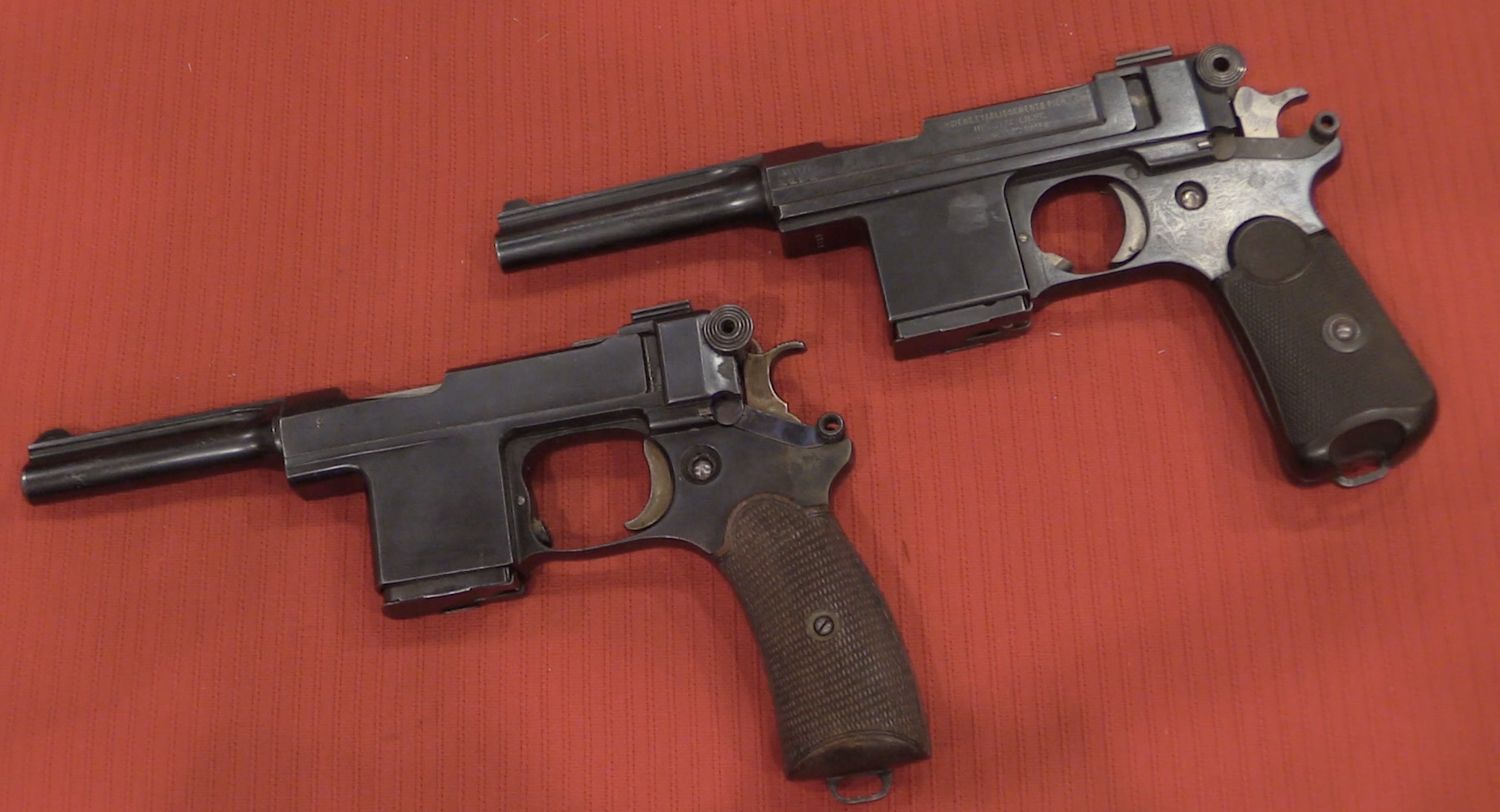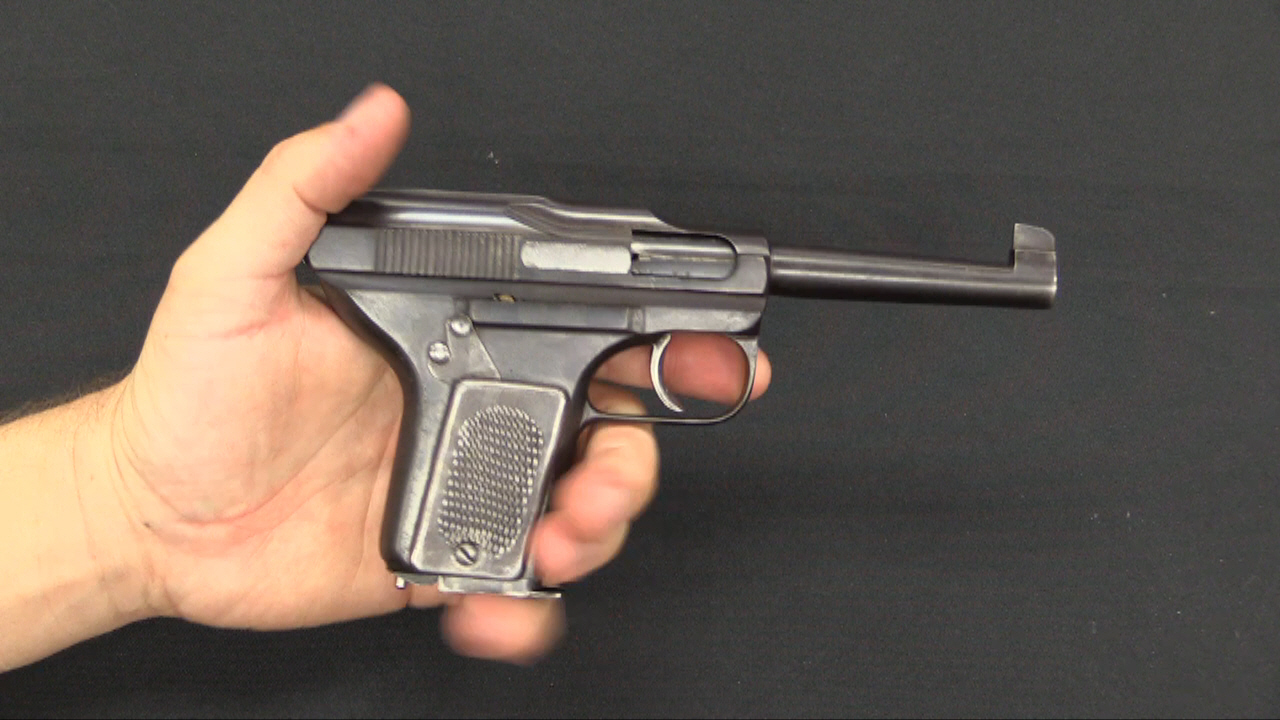When Denmark decided to replace its M1910/21 Bergmann service pistols, it did not have to look far for a very high-quality option. The Swiss military was just concluding several years of handgun trials that had culminated in the SIG P210. This was an extremely well-made weapon, arguably the highest quality service pistol ever widely adopted.
Based on the French 1935A pistol designed by Charles Petter, the 210 is a single-stack 9x19mm pistol with an 8-round magazine, a single action trigger and exposed hammer. The slide rails run the full length of the frame to improve accuracy, and the fire control group is a self-contained removable unit like the 1935A and Soviet TT33.
Denmark adopted the gun as the m/49 in 1949, and would purchase a total of just under 27,000 of them. In 1995 many were surplussed, and purchased by Hammerli for retain resale.




Hi Ian . Not all of the M 49 pistols are surplussed. It is still in use by the armed forces . The special forces and some others uses other pistols but most of the armed forces are still using them
the best ever
Is there any information on why the Swiss rejected the double stack magazine version of the P210? Was the grip perhaps too wide to their liking or was the double stack magazine unreliable?
The P210 and the Makarov PM represent opposite ends of immediate post-WW2 military service pistol design philosophy. Not in every way, since both are reliable and accurate, but the P210 is expensive and fairly big and heavy, whereas the PM is inexpensive, compact and fairly light for its day. Still, their actual effectiveness in typical military use is likely quite similar. The 9×18mm cartridge is weaker on paper, but still plenty effective against an enemy soldier who is not wearing body armor. Both are generally ineffective against someone wearing modern NIJ Level II or better body armor, unless unprotected areas are hit. Only if level I or possibly IIA armor is used does the SIG have an advantage. On the other hand, the Makarov has one significant advantage in defensive use, the DA/SA trigger. Carrying the P210 “cocked and locked” is just not the same, and less safe in any case.
All things considered, I would probably choose the PM if I was a soldier or officer in the 1950s. At that point even officers who lead from the front would have been carrying an SMG or assault rifle as their primary weapon, and the PM is lighter, more compact and goes bang every time the safety is off and the trigger is pulled.
“Makarov PM represent opposite ends of immediate post-WW2 military service pistol design philosophy”
At early stage of development of new automatic pistol, 7,65 mm Browning (.32 Auto) and 9 mm Kurz (.380 Auto) were used – apparently influence from German forces, which uses such caliber in their automatic pistols.
Notice that, in same time, there were also working on bigger weapon which will result in APS (commonly known as Stechkin), which was generally less liked than (ligther) PM, nonetheless it found some long-lasting applications (for example: RPG-7 operators).
Yes, but the APS was basically a Personal Defense Weapon with its somewhat anachronistic detachable shoulder stock and holster.
The reason why the single stack was taken, is because it was easier for holding at target shooting. this came from swedish sport shooters, as they had to look for an alternative for the Luger after ww2. (source “Die SIG Pistolen” from H.P. Doebeli)
Hi Ian, Greatings Everyone.
Some addendas:
-Serial numbers 0001-16607 were blued with wooden grips (same as the first swiss M49s)
-Serial numbers 35025-36441 (the ones that fell within the West Germany Bundesgrenzpolizei’s order) are P210/4 rather than 47/8, with the new and much more confortable slide release
-Serial numbers 16090-16095 were 5 experiments with light alloy
Best Regards,
Lorenzo
By the way, there are two pistols only differ in the implementation of slide rails: otherwise the slide rails have the same lenght, geometry, dimensions, tolerances and clearances etc. – (theoretically) why more accurate – if really more accurate – the pistol with internal slide rails, than the conventional one?
https://en.wikipedia.org/wiki/SIG_Sauer_P210 has following explanations
its slide rides inside the frame rails, rather than outside as in the traditional Browning pattern. This latter feature mimics the frame-to-receiver interface of its predecessor in Swiss military service, the Luger pistol, allowing for a very tight fit between the slide, barrel and frame without compromising reliability.
Although for service-type automatic pistol increasing accuracy beyond some point gives little advantage – most users wouldn’t be able to make use of it and also most modern military doctrines except automatic pistol to be used in close ranges.
Therefor with internal guide rails, CZ75 is nothing new in that respect. Also, I am observing that barrel operating cam is of same kind, being enclosed rather than open as on GP35. This leads me to think that Czechs (designer Myska) added primarily in fire control, making CZ75 double-single action fired.
Also, one would think that the latter would cost less, although these days in customised version they can cost easily at around $ 1,500.
“internal guide rails”
That layout was also used in Star Model 28 and derivations:
http://www.star-firearms.com/firearms/guns/283031/
“double-single action”
That is mutually exclusive – please chose one of following:
– single action
– double action
– double action only (that is also linguistically awkward – calling having one mode as double, but as it is already accepted just use it)
P210 has no Sauer origin. It is fully Swiss. Besides, Blowback Astra pistols used internal guide rails much before P210. From 1920 onward.
In common gun terms, “Action” refers the type of work which trigger accomplishes, as, that part in action types s;
– Single; Only releases the cocked impact element,
– Double; cocks and releases the impact element,
– Combined, or Single/Double; Both releases a precocked, or cocks and releases the impact element.
In real sense “Double Action Only” is a trigger working action which simply cocking and releasing the impact element without single action feature, but this term is somewhat changed to an action type, as cocking and releasing the impacting part without second strike feature.
Just found this clip about the production of the gun from the factory, not sure if its the batch for the Danish contract, or a later one . : http://memobase.ch/de#document/SFW_CJS_CGS-SFW_0415-1